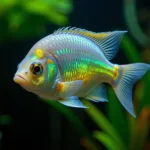The shimmering allure of colored pearls has captivated people for centuries. But how are colored pearls made? This fascinating process blends natural occurrences with human intervention, resulting in a breathtaking array of hues from soft pastels to vibrant jewel tones. Let’s delve into the secrets behind these colorful gems.
Understanding the Basics of Pearl Formation
Before we explore the specifics of colored pearls, let’s recap how any pearl is formed. A pearl begins its life as an irritant, like a grain of sand, that enters a mollusk, such as an oyster or mussel. To protect itself, the mollusk secretes a substance called nacre, which layers around the irritant. This nacre, composed of calcium carbonate and conchiolin, is what gives a pearl its iridescent sheen. Over time, layers of nacre build up, eventually forming the pearl. Now, what about color?
Natural vs. Cultured Colored Pearls
There are two main types of colored pearls: natural and cultured. Natural colored pearls are extremely rare and form without human intervention. Their color is determined by the species of mollusk, the environment it lives in, and the composition of the nacre.
Cultured pearls, on the other hand, are the result of human intervention. A technician carefully implants a nucleus, along with a small piece of mantle tissue, into the mollusk. This tissue graft influences the color of the nacre produced. This process allows for more control over the resulting pearl’s color and size.
What Influences the Color of a Pearl?
Several factors contribute to a pearl’s color. These include:
- Type of Mollusk: Different species of mollusks produce different colors of nacre. For example, black-lip oysters are known for their dark, iridescent pearls, whereas Akoya oysters often produce white or cream-colored pearls.
- Water Quality and Diet: The mollusk’s environment, including the water quality and its diet, can affect the color of the pearl. Just like how what color are clams is influenced by their environment, pearls too are subject to such influences. Nutrients in the water can affect the trace elements within the nacre, influencing its hue.
- Nacre Thickness: The thickness of the nacre layers also plays a role. Thicker nacre tends to produce more intense colors, while thinner nacre may result in more pastel shades.
- Overtones: In addition to the body color, pearls also have overtones, which are subtle iridescent hues that appear on the surface. These can add depth and complexity to the pearl’s overall appearance.
The Art of Culturing Colored Pearls
Culturing colored pearls is a delicate art that requires skill and patience. What color stone is January may be a garnet, but the color of a pearl is a far more complex issue! The process of implanting the nucleus and tissue graft is crucial to the final color. The type of tissue used and the location of the graft within the mollusk can significantly influence the pearl’s hue.
Expert Insights
“The beauty of cultured pearls lies in the ability to influence their color while still relying on the natural processes of the mollusk,” says Dr. Emily Carter, a leading marine biologist specializing in pearl cultivation. “It’s a fascinating blend of science and art.”
“Understanding the nuances of each mollusk species is key to achieving specific colors,” adds James Miller, a veteran pearl farmer with over 30 years of experience. “Each species reacts differently to the grafting process, and it takes years of experience to master the techniques.”
Conclusion
The creation of colored pearls, whether natural or cultured, is a captivating process that combines the wonders of nature with human ingenuity. From the subtle whisper of pastel pink to the dramatic depths of black Tahitian pearls, the spectrum of colors available is truly remarkable. Understanding [how are colored pearls made](how are colored pearls made) allows us to appreciate the artistry and dedication involved in bringing these beautiful gems to life.
FAQ
- Are all colored pearls natural? No, most colored pearls on the market are cultured. Natural colored pearls are extremely rare and expensive.
- Can pearls change color over time? Yes, pearls can fade or change color over time if exposed to excessive heat, light, or chemicals.
- What is the most valuable pearl color? The value of a pearl depends on various factors, including size, luster, shape, and color. However, some of the rarest and most valuable pearl colors include deep black, golden South Sea, and intense peacock green.
- How can I tell if a colored pearl is real? A gemologist can examine a pearl to determine its authenticity. Look for natural imperfections as a sign it is not an imitation.
- Can I dye pearls to change their color? While some treatments exist to enhance or alter pearl color, they are generally not recommended as they can damage the pearl over time. Just like you can’t permanently change what color are snowflakes, a pearl’s natural color is inherent. Some methods, like how do i color rice, use dyes, but that won’t work on pearls.
Common Questions
- How are freshwater colored pearls made?
- What determines the overtones of a pearl?
- What are the different types of cultured pearls?
Further Exploration
- Explore the history and cultural significance of pearls.
- Learn about the ethical considerations of pearl farming.
- Discover the different types of pearl jewelry and how to care for them.
Need assistance? Contact us 24/7: Phone: 0373298888, Email: [email protected], or visit us at 86 Cau Giay, Hanoi.

